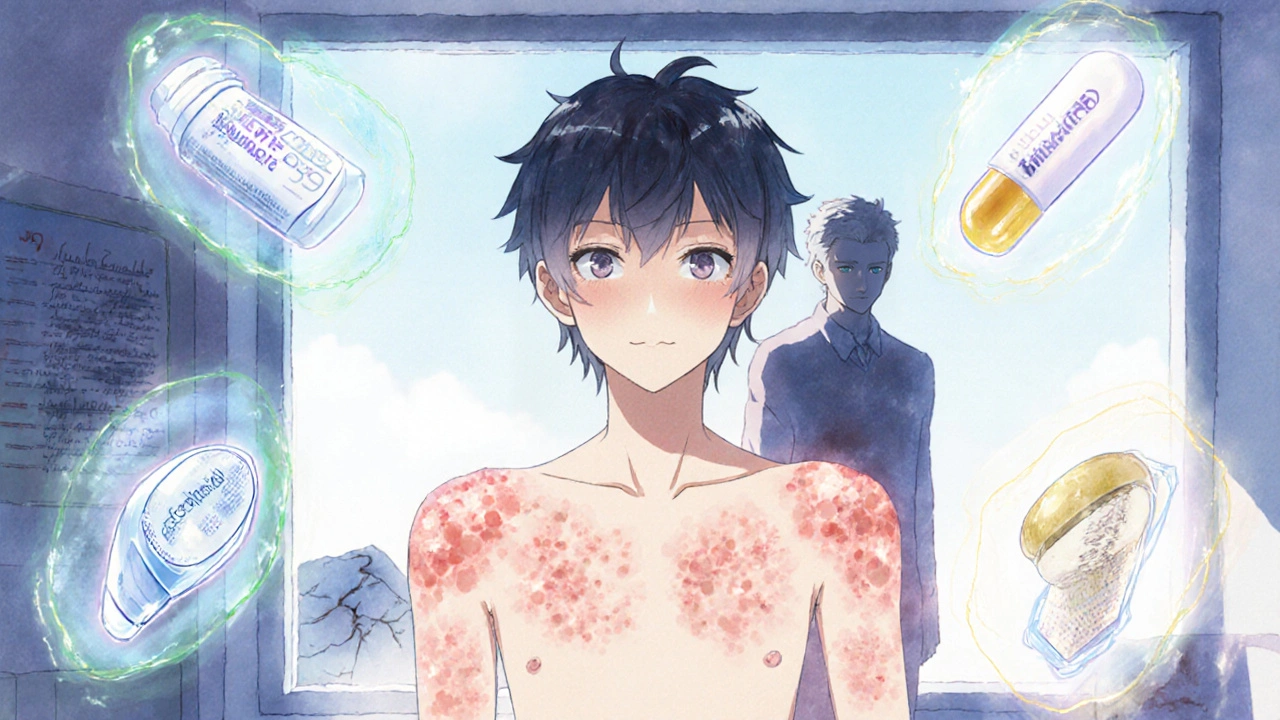Dapsone treats skin conditions like dermatitis herpetiformis and leprosy, but side effects like anemia and nerve damage are common. Learn about safer, effective alternatives including colchicine, doxycycline, and rituximab.
Read MoreDapsone Alternatives: Safer, Effective Options for Skin and Infection Conditions
When you need to treat dapsone, a sulfonamide antibiotic used for leprosy, dermatitis herpetiformis, and certain skin infections. Also known as diaminodiphenyl sulfone, it’s effective but can cause serious side effects like anemia, nerve damage, and allergic reactions. Many people end up searching for dapsone alternatives, other medications or approaches that manage the same conditions without the same risks. These aren’t just backups—they’re often better choices depending on your health, tolerance, and what you’re treating.
For dermatitis herpetiformis, a chronic skin condition linked to gluten sensitivity., the go-to alternative is a strict gluten-free diet. It doesn’t just reduce skin bumps—it can eliminate them over time, making medication unnecessary for many. When diet alone isn’t enough, sulfapyridine, another sulfonamide that’s similar to dapsone but sometimes better tolerated. is used. It’s not perfect—still carries risk of blood issues—but it’s a common switch when dapsone causes trouble. For leprosy, rifampicin, a powerful antibiotic that kills the bacteria causing leprosy. is often combined with clofazimine or minocycline in multi-drug regimens. These combinations reduce resistance and lower the need for dapsone altogether.
If you’re dealing with recurrent skin infections or inflammatory conditions, sometimes the best alternative isn’t another drug. Topical treatments like clindamycin gel, an antibiotic applied directly to the skin to reduce bacteria and inflammation. work well for acne-like rashes. For autoimmune skin issues, methotrexate, a low-dose immunosuppressant used for psoriasis and other chronic skin diseases. can be a long-term solution with fewer blood-related risks than dapsone. And in cases where infection is the main problem, antibiotics like doxycycline, a tetracycline-class antibiotic effective against a broad range of bacteria. offer broad coverage without the sulfonamide risks.
What you’ll find in the posts below are real comparisons—what works, what doesn’t, and what people actually experience. You’ll see how others managed side effects, switched medications safely, and found relief without relying on dapsone. There’s no one-size-fits-all fix, but there are clear paths forward. Whether you’re dealing with a skin rash, a chronic infection, or a reaction to dapsone, the options here are practical, tested, and focused on your health—not just the label.
